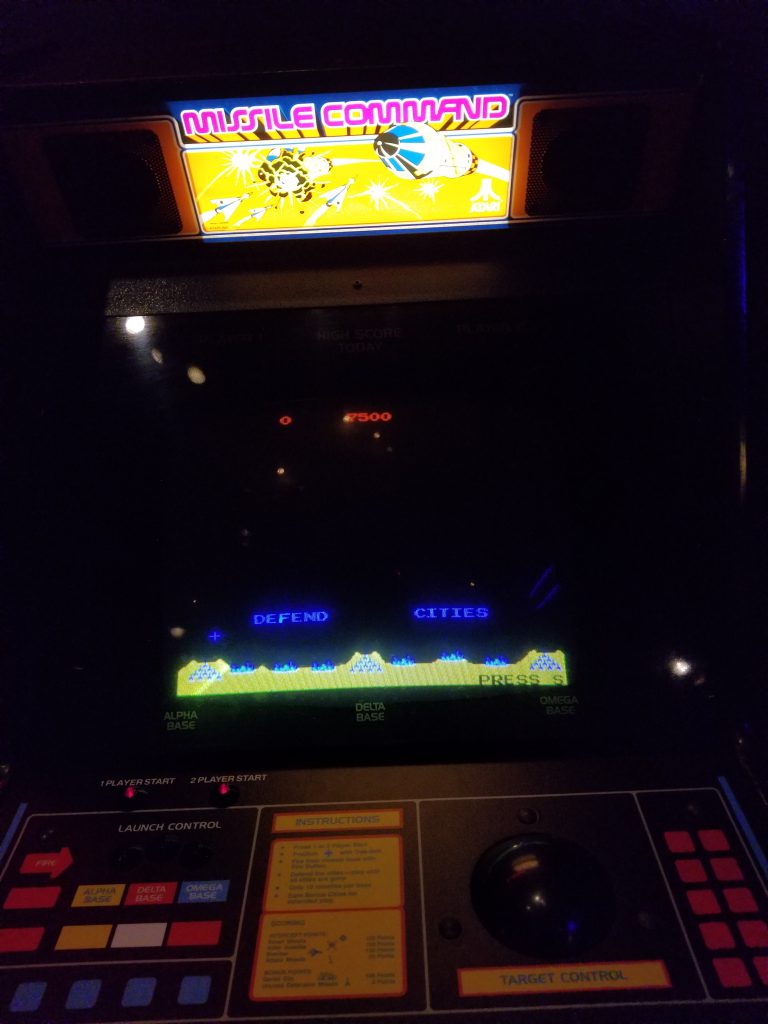written by David Steffen

Missile Command is a franticly paced war game published as an arcade console by Atari in 1980. In each level of the game you have three bases that can fire missiles that need to defend themselves and their cities against incoming enemy missiles.
The controls consist of a roller ball for movement and three separate firing buttons, each of which fires a missile from one of the bases. Some of the enemy missiles are simple predictable shots, others can split into multiple pieces that move in different directions, enemy planes can fly through the area. You have to keep your cities alive until the timer for the level runs out, without running out of your own missiles while missiles are raining down from multiple directions.
This game is frantically paced and while simple to understand is very difficult to master and no wonder it was so popular (and inspired by the dominant fear of the times during the Cold War).
While I had been familiar with the game from its reputation, I played this one for the first time at the Game Changers exhibit at the Science Museum of Minnesota.
Visuals
Probably good for the era, can certainly handle a large amount of moving objects
Audio
Typical for the era.
Challenge
Very high.
Story
Very basic story (typical of the format).
Session Time
Depends how good you are!
Playability
Simple to understand, hard to master–one fire button for each base plus a rollerball for moving the targeting reticle (at least in the original arcade version). There is just a lot going on all at once, hard to keep up.
Replayability
Not in the usual way I mean, but if you like this kind of game there’s certainly plenty of fun to be had.
Originality
Still recognizable as its own thing after almost 40 years.
Playtime
I don’t know how long it would take to play all the way through.
Overall
This is a solid and challenging game, though probably not one of the first I’d recommend for a casual gamer because it is probably one of the more difficult games in a difficult genre. I haven’t come across a convenient looking port on a modern-ish system, but you might be able to find one in an older system or an emulator.
